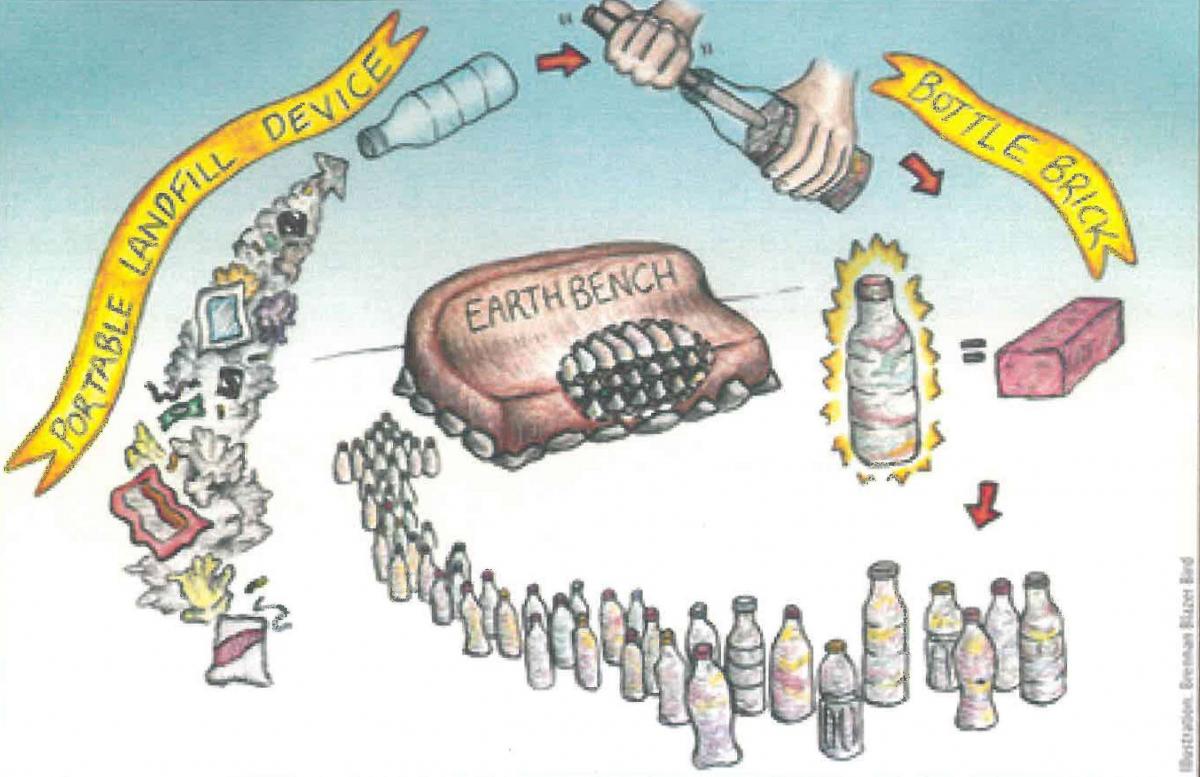 This spring, seventh grade students will be working on designing and building an “Earthbench” made of recycled plastic bottle “bricks” and cob to share with the Mount Madonna School (MMS) community. This interdisciplinary STEAM (Science, Technology, Engineering, Art, and Mathematics) project is a hands-on component of their classroom learning about human-caused environmental impacts and responsible management of Earth’s resources.
This spring, seventh grade students will be working on designing and building an “Earthbench” made of recycled plastic bottle “bricks” and cob to share with the Mount Madonna School (MMS) community. This interdisciplinary STEAM (Science, Technology, Engineering, Art, and Mathematics) project is a hands-on component of their classroom learning about human-caused environmental impacts and responsible management of Earth’s resources.“As students explore sustainability through energy, water, natural resources and waste, this project integrates their learning by empowering each of them to be a part of the solution,” said science teacher and project coordinator Katrina Leni-Konig. “The Earthbench re-purposes waste into a useful no-cost building material that people around the world are using to build benches, homes, and even school houses.”
The students have begun collecting clean and dry individual-sized disposable plastic bottles with lids, along with pieces of soft plastic including plastic bags, packaging, and plastic food wrap. They will use the pieces of soft plastic to stuff the empty bottles with pieces to make hard plastic “bricks” for constructing the infrastructure of the bench.
“Plastic bottle bricks are an eco-friendly alternative construction material that diverts plastic waste from landfills and the ocean,” explained Leni-Konig. “One of our project goals is an effort to divert waste from recycling centers and landfills, and while we encourage and would appreciate any recycled supplies that people send up, we do not want anyone to buy items that they wouldn’t normally buy in order to provide for this project.”
The students have set up a labelled collection bin in front of the middle school science classroom (room C17). As part of their design effort, students will figure out how many bottle bricks are needed for the project. By weighing the bricks, students will be able to calculate how much waste they have diverted from the landfill. After the bottle bricks are laid, the bench will be shaped using cob, a popular natural building materials usually comprised subsoil, water, straw and lime, in a process similar to creating a sculpture.
The students’ completed bench in intended to be a permanent installation outside the middle school science classroom. The finished size will depend on how many bottle bricks are made and how fast the students can build.
“Eventually, I would like the seating area to be large enough for an outdoor classroom,” shared Leni-Konig, “although this may take more than just this school year to complete.
As a teacher, I look for opportunities to connect students with math and science, and develop their interest in engineering. It is especially important to bring a diversity of projects to spark the interest of students who may not have been interested in engineering before. I found the Peace-on-Earthbench Movement at http://www.earthbench.org/, and I thought it was a perfect project for the seventh graders. My own experience with natural building in Costa Rica had a major impact on me. The students will be working with their hands together to build something for their community that they can be proud of.”

